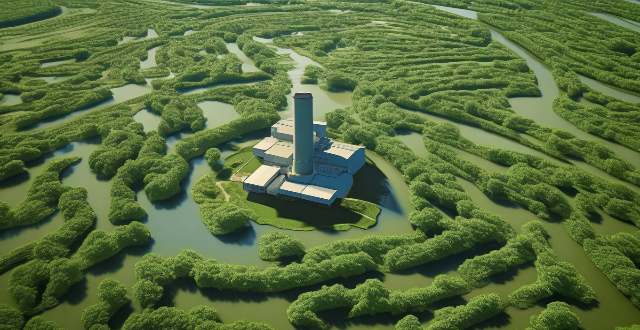The text discusses the impact of air pollution on the environment and outlines strategies to mitigate its effects. It highlights how air pollution contributes to climate change through greenhouse gas emissions and ozone depletion, degrades ecosystems through acid rain and habitat loss, affects human health by causing respiratory and cardiovascular diseases, reduces visibility with smog and haze, and leads to economic consequences such as crop damage, increased healthcare costs, and a decline in tourism. Mitigation strategies include transitioning to renewable energy sources, promoting efficient transportation, enforcing industrial regulations, implementing urban planning, and cooperating through international agreements.

Impact of Air Pollution on the Environment
Air pollution is a major environmental issue that affects not only human health but also the ecosystems and natural resources. It is caused by various sources, including transportation, industrial activities, burning of fossil fuels, and agricultural practices. The effects of air pollution on the environment are wide-ranging and can be categorized into several key areas:
Climate Change
Greenhouse Gas Emissions
- Carbon Dioxide (CO2): Released from burning fossil fuels, deforestation, and other human activities.
- Methane (CH4): Produced from agriculture, waste management, and fossil fuel extraction.
- Nitrous Oxide (N2O): Emitted during agricultural processes and combustion of fossil fuels.
These gases trap heat in the atmosphere, contributing to global warming and climate change.
Ozone Depletion
Chemicals like chlorofluorocarbons (CFCs) used in refrigeration and aerosol sprays can destroy the ozone layer, which protects life on Earth from harmful UV radiation.
Ecosystem Degradation
Acid Rain
Sulfur dioxide (SO2) and nitrogen oxides (NOx) released into the atmosphere can form acid rain when they react with water, harming forests, lakes, and soils.
Habitat Loss
Pollutants can contaminate soil and water, making habitats unsuitable for many species, leading to biodiversity loss.
Human Health Impacts
Respiratory Problems
Fine particulate matter (PM2.5) and ground-level ozone can cause lung diseases, asthma, and other respiratory issues.
Cardiovascular Diseases
Air pollutants have been linked to heart disease, stroke, and other cardiovascular problems.
Visibility Issues
Smog and Haze
High levels of pollutants can create smog and haze, reducing visibility and affecting tourism and transportation.
Economic Consequences
Crop Damage
Acid rain and other pollutants can reduce crop yields, affecting food security and economic stability.
Healthcare Costs
Increased healthcare costs due to air pollution-related illnesses put a strain on individuals and healthcare systems.
Tourism Decline
Areas with poor air quality may see a decline in tourism, impacting local economies that rely on visitors.
Mitigation Strategies
To combat the effects of air pollution on the environment, various strategies can be implemented:
1. Renewable Energy Sources: Transitioning to wind, solar, and hydroelectric power reduces reliance on fossil fuels.
2. Efficient Transportation: Promoting public transit, electric vehicles, and bike use decreases emissions from transportation.
3. Industrial Regulations: Enforcing stricter emissions standards on industries can limit pollutant release.
4. Urban Planning: Green spaces and tree planting can help absorb CO2 and improve air quality in cities.
5. International Agreements: Cooperation through agreements like the Paris Agreement helps countries work together to reduce greenhouse gas emissions globally.
In conclusion, air pollution has far-reaching consequences for the environment, affecting not only the natural world but also human health and socioeconomic structures. Addressing this issue requires collective action at individual, community, national, and international levels to adopt sustainable practices and policies aimed at reducing air pollution and its associated impacts.